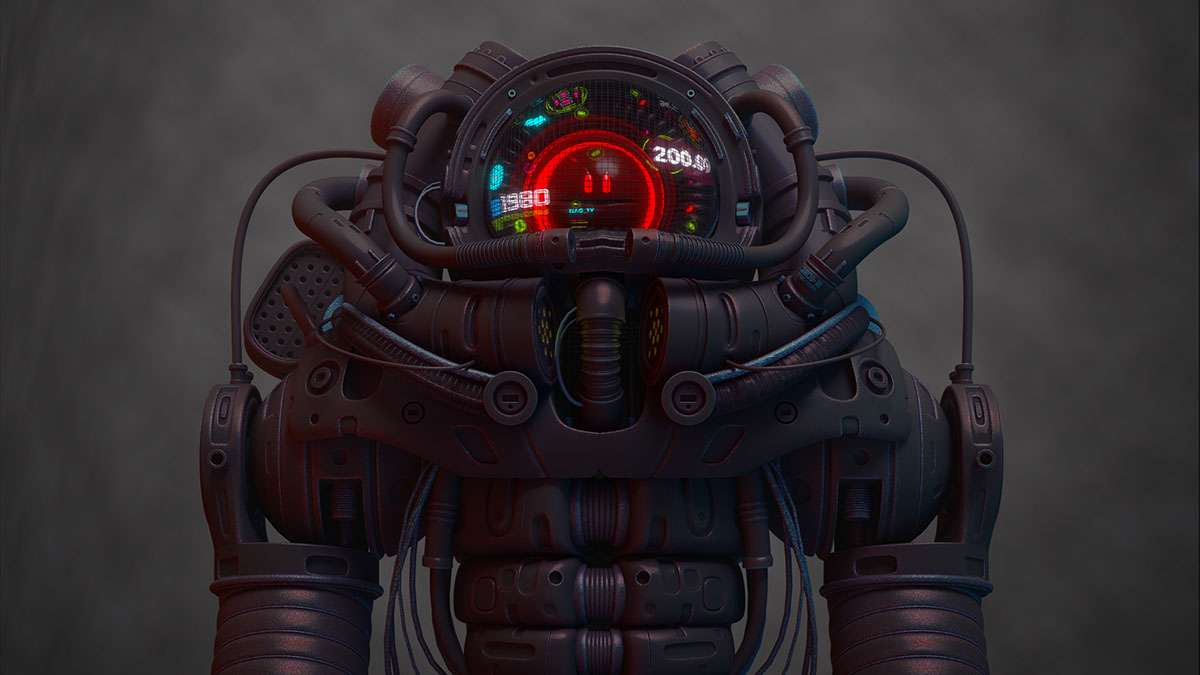where no robot has gone before…

Although we’d love to go to other solar systems ourselves, being human has its limitations. Our vulnerability to radiation, our limited lifespans and the sheer amount of hardware it would take to send enough humans to an extrasolar world, mean that our first detailed look at an alien world light years away will be done by robots. And it may seem probable that the first contact we make with aliens will be with the use of machines rather then a diplomat in a three piece suit. It would be interesting to know what aliens would think of us after shaking one of its appendages with one of our rugged machines built for autonomous exploration. Or maybe, just maybe, they would actually be shaking hands with us, only we would be a very different species than we are today…
There are all kinds of ideas about using robots to explore the galaxy. The simplest method is to send a probe as fast as the laws of physics safely allow and wait for years until it finally beams back information. But that’s like going all in at a poker game when you only see two of your cards. You think it should work but when things go wrong, you don’t really have the chance to fix it and unless everything works almost perfectly when it gets to its destination, all your money and effort are wasted. Worst case scenario is that you never hear from the robot again after it leaves the heliosheath. It’s also a very slow and inefficient way of exploring space because you have to send massive probes to specific targets from the same starting point, even if two of the systems you want to study are just a few light years away from each other.
And this is where the popular concept of self-reproducing robots comes in. You build one robot able to make copies of itself from raw materials it finds on other worlds and you test it as thoroughly as you can. Then, you send it off to your closest target where it replicates and sends all its copies to other solar systems which also make copies of themselves and send them further out. Given enough time, this exponential rate of exploration could allow us to reach deep into the galaxy and cover a notable percentage of it in just under a million years. Though by notable, I mean just a percentage or two of the immense stellar territory.
It’s an interesting idea but not without its major hurdles. While we can build self-replicating robots, we would be very restricted in the materials we can use. Complex alloys and plastics are probably out of consideration, even though they would make the robot lighter, stronger and significantly boost its processing power. It’s very difficult to pack the equivalent of a universal materials lab into a robot and we can’t just rely on our estimates on what we will or won’t find on other planets to shortcut the assembly process. The other problem would be the accuracy of the assembly process. Nothing less than perfect will do. When we rely on robots to do all the work for us so far away we can’t fix them when they break down or develop a defect, they need to be in perfect working order or as close to it as possible. When they start making defective copies that in turn propagate the defect, entire generations of cybernetic explorers will be crippled. If they were living things, that would be just a normal part of evolution, but since they’re not, it’s a gradual breakdown into obsolescence.
Last, but certainly not least, is the issue how they’re going to explore incredibly distant places on their own. As pointed out in many previous posts on the subject, artificial intelligence only goes so far. Even if we were to be very optimistic about AI developments in the next hundred years, sending our best robots to extrasolar worlds would be like sending little children and hope they do what you want them to do. Oh sure they’ll be able to get you samples and oceans of data but it might be data you don’t want or don’t care about. They also wouldn’t be able to know what’s important to you and lack the ability to spot something and come to a sudden realization that it might be extremely important. If it spots a random alien doing a tap dance somewhere on the horizon, it may just ignore the sighting because that’s not the primary mission objective at the moment.
No, if we really want to explore worlds orbiting other stars and do it quickly and efficiently, we need to go there ourselves. Of course we can’t jump on a spaceship with “Gliese 581 or bust” scrawled on the side and hit the gas. We would need to build a new method of propulsion and tough spaceships able to withstand the rigors of deep space. And we would also need to modify ourselves. Human explorers scouring planets trillions and trillions of miles from home would have to be cyborgs with extensive genetic modifications, able to live longer than we do today and capable of tolerating conditions we would consider downright hostile. Space exploration on an interstellar scale calls for robotic endurance and constant creative problem solving. Machines frozen in time by their construction methods and code are not intelligent enough. Humans with their vulnerable bodies are too delicate. Combine the two and you might have a shot. How exactly these cyborgs would reproduce to spread to other solar systems though, is something I leave to your imagination. For now.





